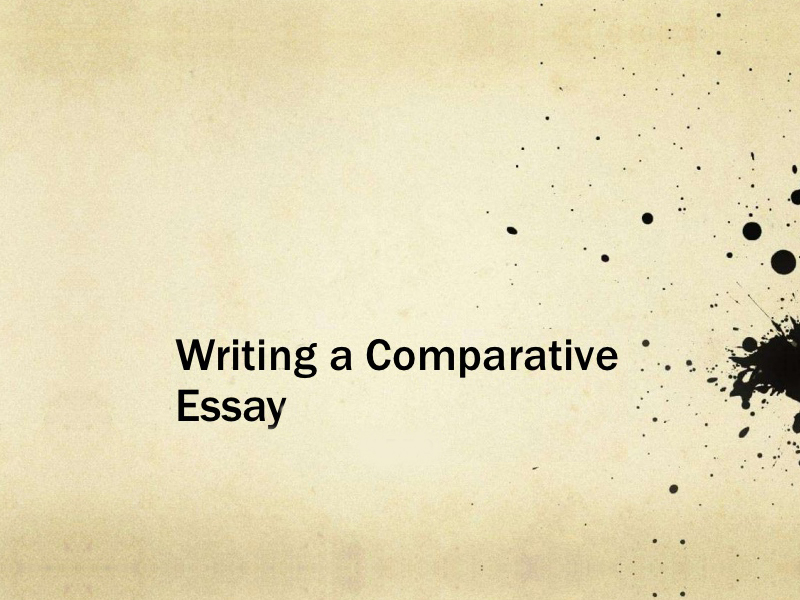How to Write a Comparative Essay
April 21, 2017| Category: Freelance Writing, Writing Tips
Whenever you are asked to compare and contrast two things, first and foremost, you need to do your research and learn in depth about the items you are comparing. The undeniable truth is that “writing comes more easily when you have something to say” (Karl Kraus). The best option would be to compile a list of all the similarities and differences you can think of. The deeper you dig into your topic, the more impressive and thought-provoking your comparison analysis will be. Once you have a thorough understanding of the two concepts and a sufficient bunch of ideas, you will feel like start writing your essay.

However, it is very unlikely you are one of those rare geniuses who can compose a good essay off the top of their head. Most people, even if they are experienced writers, find it easier to write an outline and give some thought to the structure before they immerse themselves in the very process of writing. Thus, a good idea would be to hold your horses, and decide what structure would be the most appropriate. There are several methods you can use while structuring a compare and contrast essay:
1. Mixed paragraphs method.
Address both concepts you are comparing in each paragraph. It means you will need to think of several aspects that can be applied to both items, and discuss each of them in every paragraph. For example, if your task is to compare two lifestyles – celebrities via ordinary people, your main body may look as follows:
Paragraph 1: Social activity of celebrities / Social activity of ordinary people
Paragraph 2: Interests of celebrities / Interests of ordinary people
You can include as many aspects as you find appropriate and discuss each of them in each paragraph comparing two concepts. The advantage of such structure is that it continuously focuses the reader’s attention on the comparison. Furthermore, each argument is equally developed.
2. Alternate method.
Each paragraph can be devoted to one of the subjects:
Paragraph 1: Social activity of celebrities
Paragraph 2: Social activity of ordinary people
Paragraph 3: Interests of celebrities
Paragraph 4: Interests of ordinary people
Such structure is recommended for complicated subjects as it will allow you to pay more attention to details and do more in-depth analysis.
3. Cover each side separately.
Devote the first part of your essay to one argument through as many paragraphs as you think would be necessary, and then cover another argument in the second part:
Paragraph 1: Social activity of celebrities
Paragraph 2: Interests of celebrities
Paragraph 3: Social activity of ordinary people
Paragraph 4: Interests of ordinary people
With this method, be careful not to make your essay one-sided. Also, it should be easy for the reader to follow. Thus, it is not recommended for complicated subjects, which require some depth and detail.
Apart from the structure, a strong thesis statement is vital for any essay, and a comparison analysis is not an exception. The comparative nature of your thesis statement will depend on how two subjects are related. In addition, it should express the nature of comparing items. The most common way of indicating the relationship between the two concepts is by using the word “whereas” in your thesis. Furthermore, each point of your argument should be linked back to the thesis. This way a reader will be able to see how new sections logically advance your argument.
Now, when you are fully-armed with a list of ideas, an outline and a strong thesis statement for your essay, it’s time to start a battle with a blank sheet of paper! “There is nothing to writing. All you do is sit down at a typewriter and bleed.” (Ernest Hemingway)
